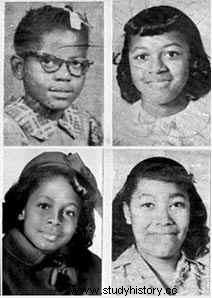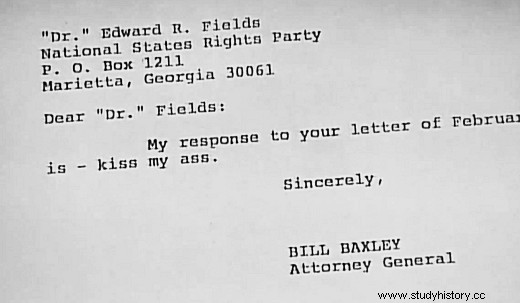Kiss my ass (kiss my ass) was the literal response, and printed on official letterhead, from the Alabama Attorney General to threats from the Ku Klux Klan.
In 1970, at just 29 years old and shortly after being elected Alabama Attorney General, Bill Baxley reopened the case 16th Street Baptist Church . On September 15, 1963, an explosion at the Baptist Church on 16th Street in Birmingham, Alabama, killed four black girls between the ages of 11 and 14:Addie Mae Collins, Cynthia Wesley, Carole Robertson and Denise McNair . That atrocity could only be the work of the Ku Klux Klan… one of its members, Robert Chambliss, was even prosecuted. , but he was found not guilty of murder and was only fined one hundred dollars and sentenced to six months in prison for possession of 122 sticks of dynamite. Although that miserable act marked a turning point in the Civil Rights Movement and contributed to the passage of the Civil Rights Act of 1964... the killers were still at large .

Until in the 70s, Bill Baxley decided to reopen the case. Logically, the reactions were immediate... Edward R. Fields , founder of the National States Rights Party (anti-Semitic, racist and anti-racial integration party) and Great Dragon of the Ku Klux Klan, sent him a letter threatening him. Bill's answer left no room for doubt:
Dear "Dr." Fields:
My response to his letter of February 19, 1976, is – kiss my ass .
Sincerely,
Bill Baxley
Attorney General

In November 1977, the 73-year-old Chambliss was retried for the church bombing, found guilty, and sentenced to life in prison. He died in an Alabama prison on October 29, 1985. On May 18, 2000, the FBI accused three more members of the Ku Klux Klan as perpetrators of the crime: Cash Herman, Blanton Thomas and Cherry Bobby . Cash had died but Blanton and Cherry were arrested, and both were tried and convicted.
